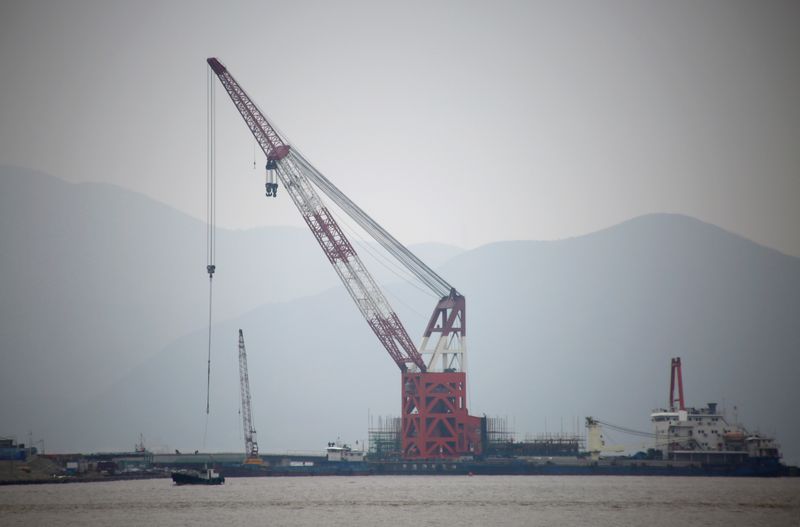By Clyde Russel
LAUNCESTON, Australia (Reuters) – China increased the pace at which it added crude oil to its inventories in March as the world’s biggest oil importer pulled in record imports from Western-sanctioned Russia.
A total of 790,000 barrels per day (bpd) were added to China’s commercial or strategic inventories in March, up from 570,000 bpd in the first two months of 2024, according to Reuters calculations based on official data.
For the first quarter as a whole, China increased inventories by 670,000 barrels per day, a figure that goes some way to undermining the prevailing market view that Chinese oil demand is strong.
This is especially the case as Chinese crude oil imports in the first quarter of this year were actually slightly weaker at 11.02 million barrels per day, compared to 11.06 million barrels per day in the same period in 2023.
China does not disclose the volumes of crude oil flowing into or out of strategic and commercial reserves, but an estimate can be made by subtracting the amount of crude oil processed from the total amount of crude oil available from imports and domestic production.
The total amount of crude oil available to refineries in March was 15.88 million barrels per day, consisting of imports of 11.55 million barrels per day and domestic production of 4.33 million barrels per day.
The volume of crude oil processed by refineries was 15.09 million barrels per day, leaving a surplus of 790,000 barrels per day to be added to storage tanks.
For the first quarter, total available crude oil was 15.31 million barrels per day, while refinery throughput was 14.64 million barrels per day, leaving a surplus of 670,000 barrels per day.
The picture emerging from the first quarter is that Chinese import demand has been broadly flat, and refiners are still adding to inventories even as prices start to rise.
It’s worth noting that the crude oil arrivals in China in March were likely placed during a period from late December to early February, a time when crude oil prices were still lower than their 2023 peaks and had yet to begin their recent rally .
Benchmark futures fell to $72.29 per barrel on December 13, the lowest since June, after trending downward since the 2023 peak of $97.06 reached on September 27.
Since bottoming in December, Brent initially stayed in a range of around $75-$85 per barrel before breaking higher from mid-March to reach a 2024 peak of $92.18 on April 12 amid continued concerns about an escalation of tensions in the Middle East as a result of the conflict between Israel and Hamas.
Brent closed at $87.42 a barrel on Wednesday after economic data from China showed the economy grew stronger than expected in the first quarter, but other indicators such as real estate investment, retail sales and industrial production remained weak.
The question for the market is whether the Chinese economy is on the path to recovery, and whether oil demand will improve in the coming quarters.
And even if demand for crude oil increases, will China buy more from the overseas market even as prices have risen, or will it turn to the inventories it built up in the first quarter.
RUSSIAN OIL
Although Chinese refiners do not disclose the quality or origin of crude oil being added to inventories, it is likely that Russian oil is one of the main types being stockpiled.
China’s imports from Russia in March amounted to 1.51 million barrels per day from the overseas market and 890,000 barrels per day through pipelines, for a total of 2.4 million barrels per day, according to data compiled by LSEG Oil Research.
This was up from 2.19 million barrels per day in February and was the highest level of imports from Russia since China stepped up purchases in the wake of Moscow’s invasion of Ukraine in February 2022, which led to discounts on Russian crude as Western countries imposed sanctions.
In contrast to higher imports from Russia, Chinese imports from its former top supplier Saudi Arabia fell to 1.59 million barrels per day in March, the lowest since December, according to LSEG.

The move to Russian crude supports the view that Chinese refineries are maximizing imports of cheaper grades, including oil from Iran and Venezuela.
The opinions expressed here are those of the author, a columnist for Reuters.


